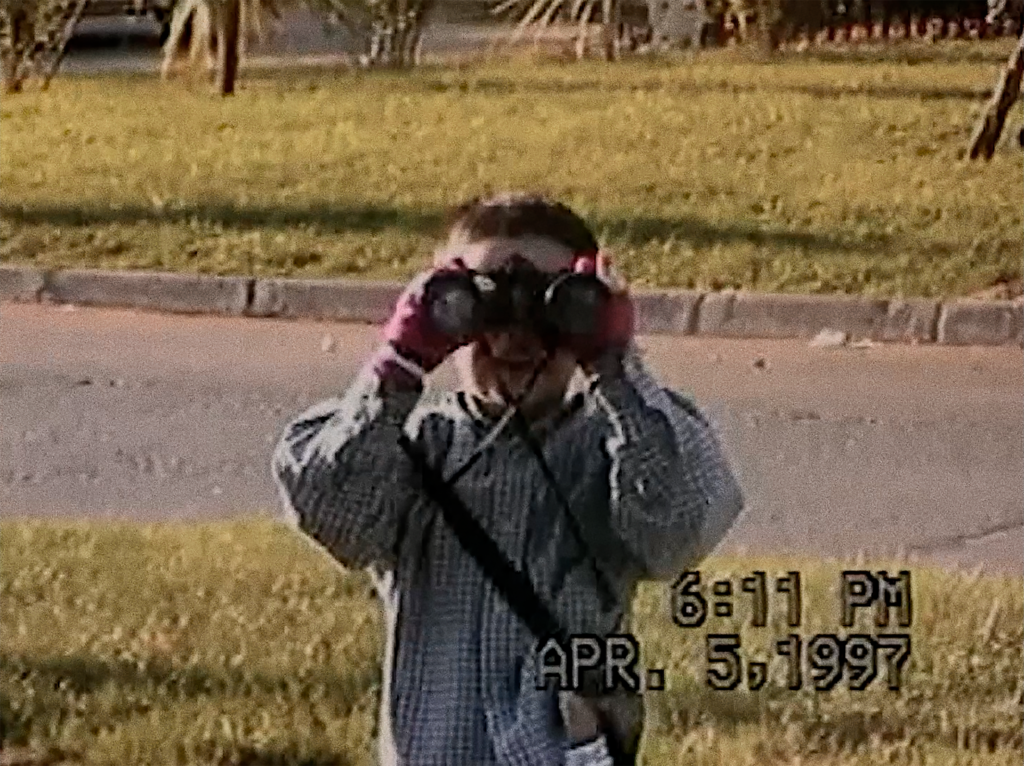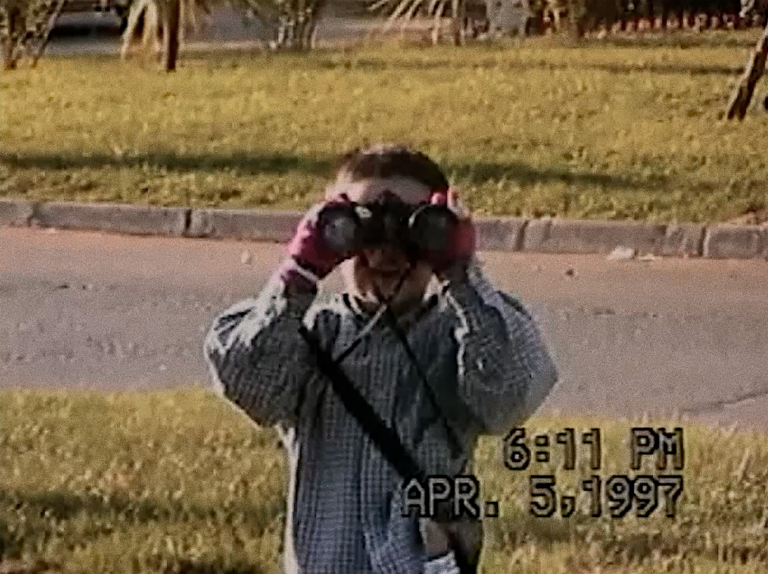Below are some questions posed to director Tana Gilbert about her competition film Ninguna Estrella (No star).
What kind of work did you do on the archival materials for your film?
The film is constituted as a gesture of representation that has no greater pretensions than to raise questions about the registration of domestic material, and the way in which we can give a resignifying twist to that look that wanted to leave a trace of the everyday.
Maintaining and reproducing the impositions of the family in a patriarchal system causes discomfort and suffering, even though we have created practices to conceal it. That is why the main objective of the work aims to stress the imposed order in family life: the confinement we women live when we are mothers and decide to stay at home raising children, the sacrifice in the work that exempts men from parental and domestic responsibilities, and the dependencies to which we are exposed in this context.
This film dispenses with a script, and tries to test production methodologies that highlight the importance of editing as a writing process, and also as a channel for the emotions we experience in the making of our films.
In every narration we sculpt our thoughts, then what we consider real ceases to be so apparent. The state of confusion that implies at the same time facing motherhood, the overwhelming timeline and the infinite possibilities of connections between images, reaffirm that personal life, love and filmmaking are impossible to separate.
Cecilia is the great author of these images, and my task was to re-signify what she chooses to consider as fundamental to her daily life. Possibly, this film could be an exercise of “postcards”, a cinematographic dialogue of those who take the archive and give it a new meaning. An invitation for those who have to go through this problem in the future to find their own answers to the same questions that remain throughout the years.
In the film, you let the home movies free to show themselves, without interference from the soundtrack or voice-over. What value, then, does the text reporting the conversation with the protagonist take on?
The text that expresses Cecilia’s first-person enunciation aims to explore the idea of our motherhood as a psychic disposition. The aim is to generate an introspective and silent story that represents our subjectivities. The dialogue between us is ambiguous and tries to provoke the limits that are established between Cecilia’s experience in the archive, the reinterpretation that I make in the work with the montage, and the common points of both represented by text from the present.
The image explores the bodily relationship established with the interior space of the house and the characters. A safe space that protects and shelters the upbringing, but at the same time isolates. The visual search of the archive emphasizes the encounter with the limits of space, and the camera becomes a physical extension that carries the body of the person it records, letting us feel its own gaze, movement and attentions. This is why the moments in which Cecilia’s face appears in the film become relevant, they are very few and are related to the feeling of discomfort that transcends in the life of the protagonist.
Would you suggest to young people a few titles of found footage that have been pivotal for your work?
One of the most important references that accompanied me during the process of No star was “For one more hour with you” by the Italian director Alina Marazzi. This film is constructed with archival material found by the director. At the age of seven her mother, Liseli, committed suicide and this material is an opportunity to learn new dimensions about her person. The 16 mm recordings are also articulated with archives of her mother’s letters and diaries, in which she recounts her relationship with domestic life, marriage and depression. An off-voice narration is presented in which the found letters are reinterpreted and addressed to different members of the family. What is interesting about the proposal is that Alina Marazzi plays Liseli’s voice-over.
First of all, there is a chronological work in the narration of the film that goes through different stages of her mother’s life: adolescence, love, motherhood, illness and existential discomfort that lasts until her death. This characteristic was considered for the narrative work of the short film. The emphasis in Ninguna estrella was on observing the passage of time in the archival material and Cecilia’s transformation.
Marazzi proposes an intergenerational reflection through the cinematographic operation, which contains a transversal gender perspective. As she interprets the voice-over that represents her mother, she generates a crossing of subjectivities in which a genuine empathy for her non-conformity with life is openly exposed. The filmmaker makes an attempt to reconcile herself with the figure of an absent mother and vindicate her as a woman. The impact on the mental health of a woman who feels she does not fit the family mandates of the time is addressed. Little by little the film undoes the romanticization of motherhood, the figure of the self-sacrificing mother, and somehow reinforces that romantic love is not enough to sustain family life.
Finally, the editing work on this film was crucial to discover the gestures that would define No Star. There are some moments in which the slowing down of the material is used in order to represent the emotions that overflow the protagonist. Images of her at different ages anticipate the crises to come.
On the other hand, I was also accompanied by a film called “Diario de Pamplona” by Gonzalo Egurza. This short film explores the potentiality of the archive image through its association, repetition and slowing down. Through Super 8 images, photographs and the dialogue of a couple in text, the film constructs the relationship of two people, an older married couple, who are emotionally dependent, exposes the memory of loss, stalking and the complexities of romantic love.
The San Fermin Festival is the setting for the story, and through the travel diaries a dialogue is constructed that exposes the indifference and boredom that each character feels for the other. There is a patriarchal context that determines this conversation and the relationship of this heterosexual couple, where a sense of violence is explored, represented through the juxtaposition of the images of the fiesta in Pamplona: men, blood and bulls.

